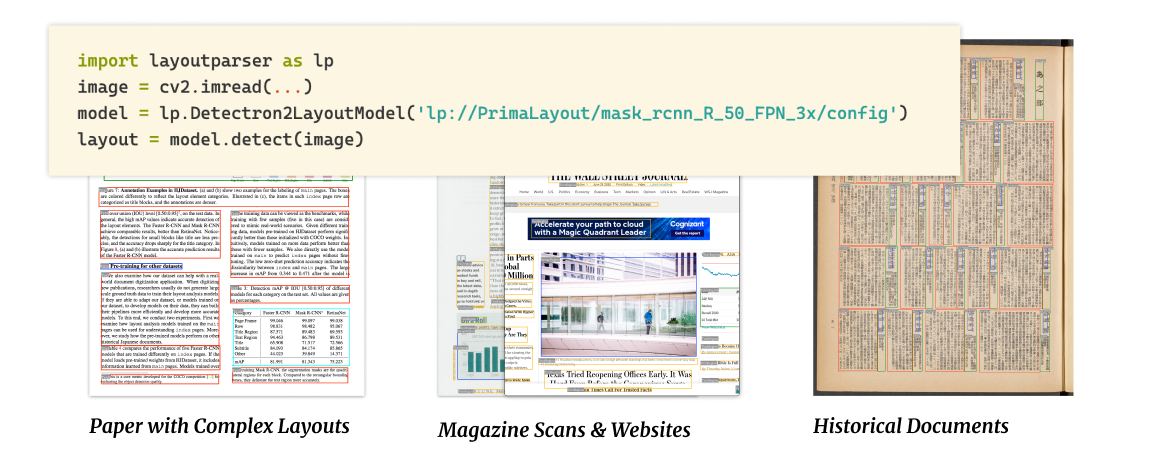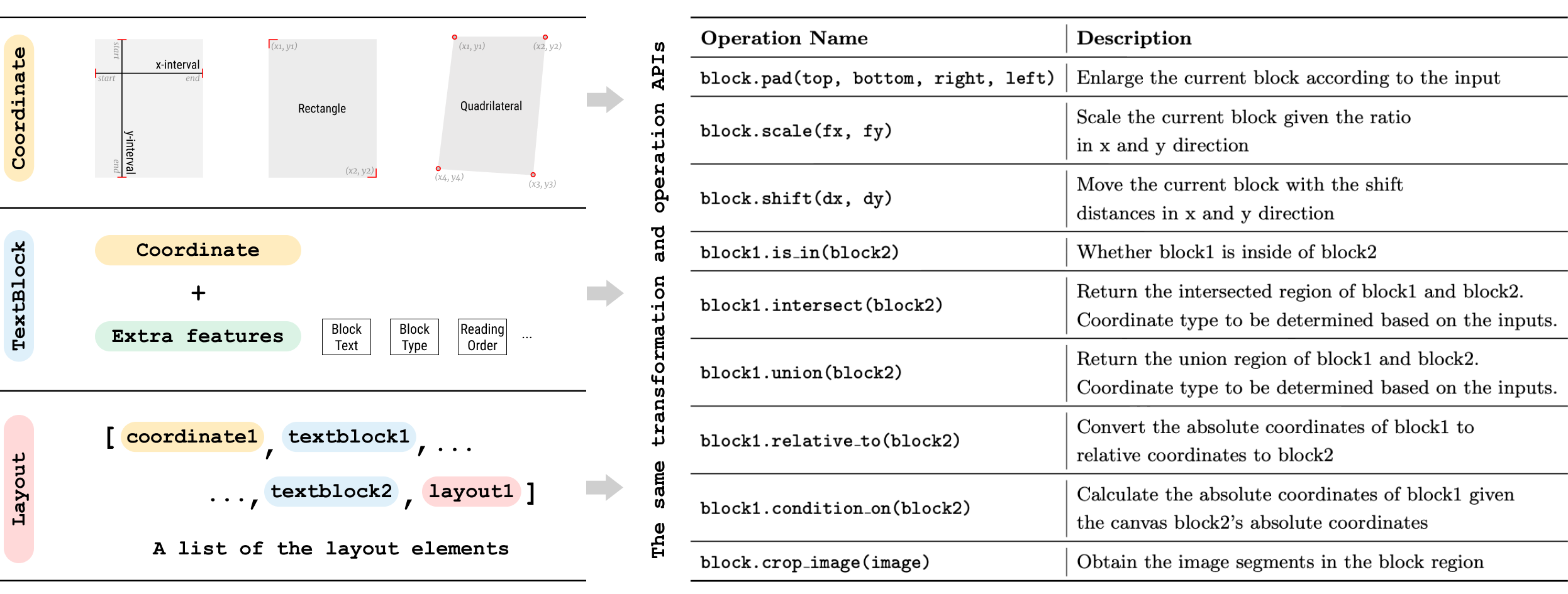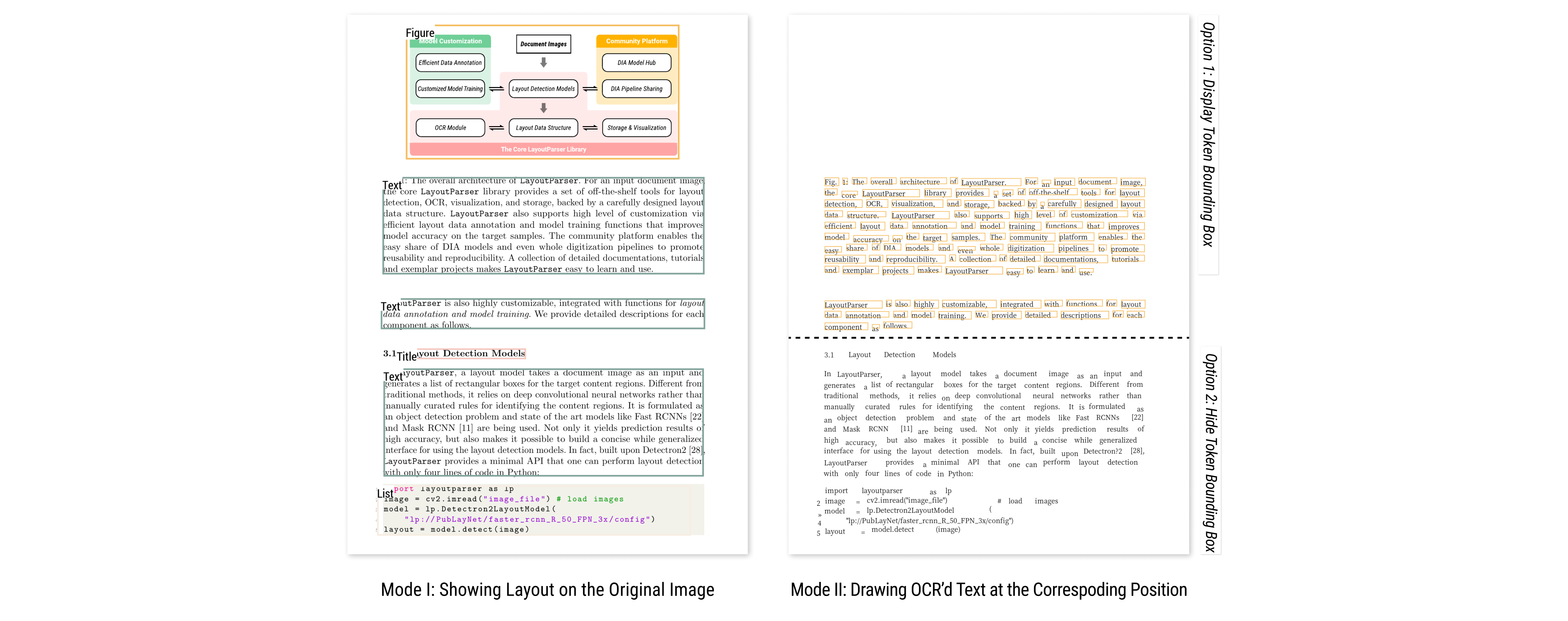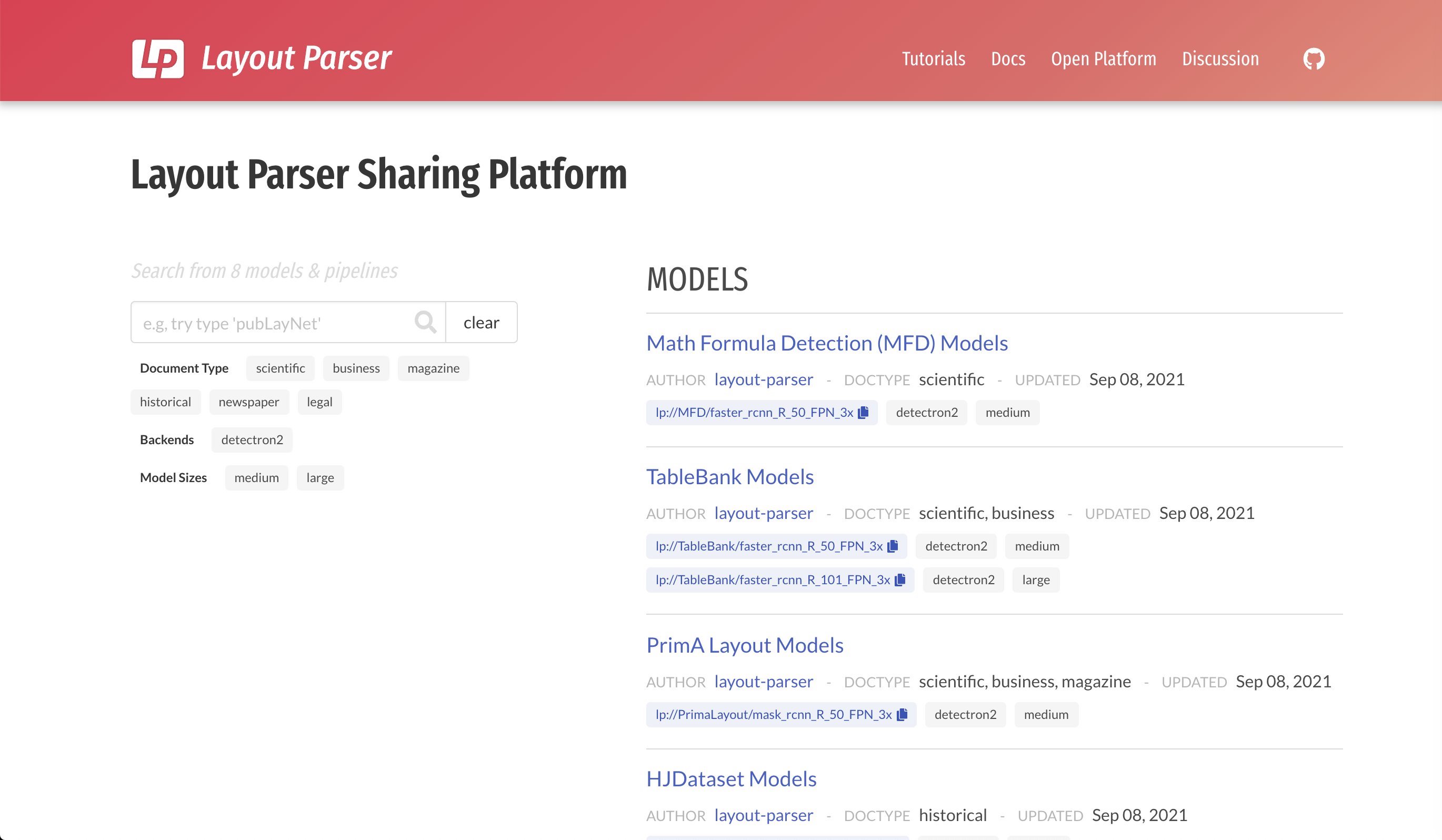Accurate Layout Detection with a Simple and Clean Interface
With the help of state-of-the-art deep learning models, Layout Parser enables extracting complicated document structures using only several lines of code. This method is also more robust and generalizable as no sophisticated rules are involved in this process.
 ▲ A set of universal APIs for performing layout detections on different types of documents.
▲ A set of universal APIs for performing layout detections on different types of documents.
 ▲ Exemplar images in the 5 used datasets (screenshots are taken from their papers or open-sourced datasets).
▲ Exemplar images in the 5 used datasets (screenshots are taken from their papers or open-sourced datasets).


